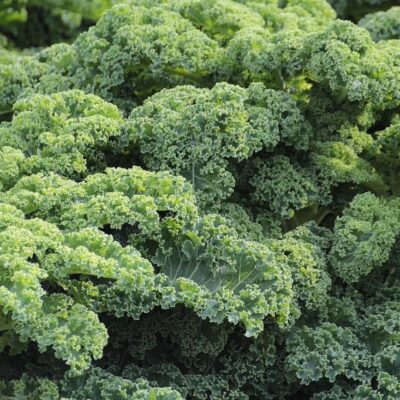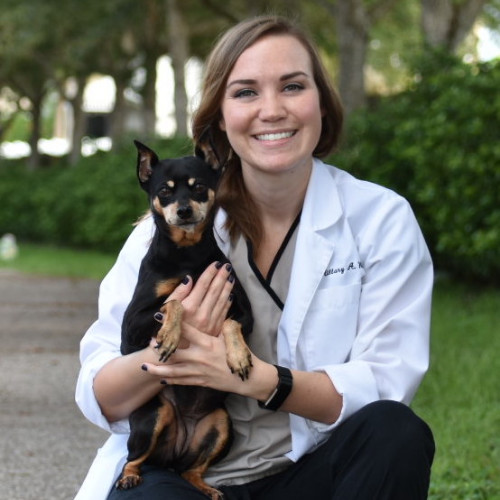Yes, your dog can eat kale without it causing them any harm. In fact, kale is very healthy for dogs. The crunchy leafy greens are low in calories and a rich source of vitamins. The superfood also has many minerals that benefit your doggy’s health.

Beneficial: This food is generally considered beneficial by the veterinary community. Dogs can get nutritional value from this food if added to a dogs regular diet.
| Food Safety | Beneficial for occasional consumption |
|---|---|
| Nutritional Value | Low in calories and carbs. Vitamins, minerals like iron, magnesium, etc. |
| Benefits | Healthy bones and heart, boosts the immune system, improves skin and fur, and more |
| Daily Servings | Less than 10 percent of daily calories is just right for a small dog |
What Are the Nutritional Benefits of Kale?
Kale is packed with essential vitamins such as B6, C, and E, as well as folate and manganese1. It also contains other mineral nutrients, including thiaminase, riboflavin, pantothenic acid, and thiamine. Additionally, kale has two important antioxidants that can help prevent cancer.
Incorporating kale into a pet’s diet can promote eye and intestinal health, and may help prevent infections. For dogs struggling with weight loss, adding lightly cooked kale as a topping can increase their happiness with fewer calories. Mineral-rich vegetables can also reduce the risk of weight gain by making pets feel full on a low-calorie food.
Can Dogs Eat Raw Kale?
Raw kale is safe for dogs, but is less digestible than cooked kale. Feeding kale can sometimes cause tummy aches, especially for dogs with sensitive stomachs. Having raw kale cooked in puree can be easier for dogs to digest. Otherwise, cooked kale has an easier digestive function and a milder taste than raw kale, which means it is usually better to cook kale or lightly steam it to make it easier to eat.
Can Dogs Eat Kale Stems?
Kale stems or kale ribs are edible but are extremely hard, fibrous and bitter. Some will sling the stem to their dogs hoping it will become a nice snack. The pup may like them and it still contains nutritional value but the calcium oxalate content is higher than a green leaf. Cooking stems can make a good eatable meal, but in its raw form can cause severe pain in your dog’s throat and make their stomach upset. It can also simply be unappealing to your puppy.
How Much Kale Can Dogs Eat?
You would be astonished to know that kale has as low as 35 calories. However, just because a certain food is low in calories doesn’t mean your dog can munch on a mega bundle of kale.
Excessive eating can lead to obesity, so it is best to serve food to your dog in safe quantities. Determining your doggy’s size is the first step down that road. Every dog requires a different number of calories, depending on their size.
Use a Dog Calorie Calculator to find out the daily calories your dog requires. Kale should be under 10 percent of their daily calorie requirement to keep a balanced diet.
Can Kale Make Dogs Sick?
There are risks to over feeding your dog kale. Kale may affect your pooch badly if he or she eats too much or has a sensitive stomach. Like any other veggie eating kale can cause your dog digestive issues, gas and diarrhea. Often dog owners have sensitive stomachs that may feel unwell when eating kale.
Is Kale Safe for Dogs?
Kale in its pure form is safe for dogs. It is important to consider that kale appears on the Dirty Dozen list. This means that it is best to purchase organic kale grown in organic soil and not contaminated by harmful pesticides.
Pesticide residue is potentially toxic and pet owners should be mindful to buy organic kale, or in the very least wash the leafy greens thoroughly to maintain a healthy dog.
All dogs react differently to new foods. While some can eat kale without any problems, others may experience digestive issues or allergic reactions.
Observe your pup’s behavior and reaction to kale. If your dog has a pre-existing medical condition, it is always advisable to consult your veterinarian before adding new foods their diet.
Potential Risks of Kale for Dogs: Kidney and Bladder Stones
Kale contains soluble oxalates, which can be safe in small amounts, but it is an additional component that your puppy should avoid. Oxalates have a high concentration of calcium, which can bind to the body and result in bladder stones. If your pup is susceptible to kidney or bladder stones or is experiencing kidney damage or disease, it is recommended to avoid oxalates2.
According to the AKC, eating too much kale can cause stomach or kidney disease, which can lead to kidney stones and thyroid dysfunctions. Therefore, it’s best to give any “human foods” in moderation.
How to Add Kale to Your Dog’s Diet
Here are some ways you can feed your dog kale if you are feeding them a homemade diet:
- Your dog isn’t a goat. Cut up the leafy vegetable and puree the leaves and stems to ensure your furry companion doesn’t have a problem digesting it.
- Serve it with protein to make it a balanced meal. Your doggy will surely enjoy the chewy, crunchy combination and the varying flavor.
- Cook it, steam it, or simply serve it raw. Try to figure out how your canine prefers it and follow their choice.
Always remember to wash vegetables thoroughly before you serve them to your dog. Make sure the kale isn’t smothered in any oil, butter, or other spices that can harm your dog and it will be a healthy addition and tasty treat.
The Health Benefits of Kale for Dogs
Kale has multiple health benefits for your dog.
- Fiber- The high fiber content helps improve your dog’s digestive functions. Occasionally feeding your dog kale will ensure proper bowel movement and prevent constipation.
- Iron- Kale also contains iron which is required for red blood cell generation and also prevents anemia. Moreover, the vitamins and calcium in kale help improve your dog’s bones and skin and boost their immune system.
- Isothiocyanate- Dietary isothiocyanate are agents found in cruciferous vegetables, such as kale, that have been found to fight cancer and have been said to be healing foods to humans, which may benefit dogs as well and help them stay healthy.
- The low-calorie food is excellent for dogs that need a more balanced meal to reduce or maintain their weight.
Can Dogs Eat Curly Kale?
You can safely feed a dog curly kale as much as normal kale, but the same rules apply. Curly kale is the most common type of kale. You can feed your dog some cooked or steamed curly kale for a healthier meal. Just like regular kale, it needs a moderate serving.
Feeding Kale In Moderation
Kale is a nutrient-packed superfood that can benefit your dog’s health in many ways. Low-calorie and rich in essential vitamins and minerals, Kale can promote healthy bones and heart, boost the immune system, improve skin and fur, and even fight cancer.
Kale should be served as part of a balanced diet, and moderation should be kept in mind, especially for dogs with pre-existing health conditions such as kidney or bladder stones.
Citations
Frequently Asked Questions
-
Yes, your dog can safely eat raw kale. However, it is crucial to ensure it is clean and free of pesticides.
-
Yes, both types of leafy greens are safe for consumption. Just remember to feed them in moderation and pair them with a nice piece of protein to ensure they consume a healthy and balanced meal.
-
Excessive food can harm your dog. Kale benefits your dog’s health, but it should be consumed in moderation and only occasionally. Regular consumption can cause long-term issues like gastrointestinal and kidney problems.
-
The best solution for feeding your pet kale is following the 10% Rule for them. The 10% rule means that dogs should consume only 10% of total treats or supplemental foods such as kale of their required daily calories.

